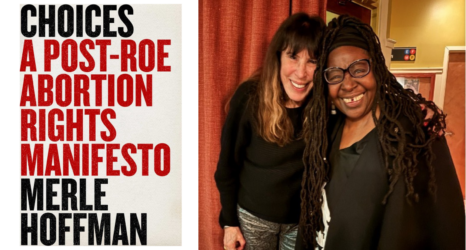The Ms. Foundation for Women has released a video that honors feminist history and calls on viewers to join in the coming fight for equality.
The beginning of the video features Angélique Roché, vice president of external affairs at the foundation, and creator, dressed in 1920s attire with a purple sash across her body emblazoned with the words “votes for women.” The visual harkens back to the suffrage movement, and the use of the color purple symbolizes bipartisanship. Roché appears standing in front of the White House in a military posture, keeping her head high and standing straight—the look of a fierce woman. And she is not alone.
The video includes several women of color wearing their own purple sashes, each spotlighting a particular concern for women under the Trump administration: they read “voting rights act,” “Title IX,” “equal pay,” “equal rights amendment,” “paid family leave” and “choice and access.”
As these women are pictured, stoic and still in various settings, we hear the voices of women who have made history, and who have spoken up for women’s rights.
“It took 72 years to establish women’s rights by law,” declares Carrie Chapman Catt, “and every one was a struggle against ignorant opposition.”
“I have faith in the American people,” Shirley Chisholm shouts. “I believe that we are smart enough to correct our mistakes. I believe we are intelligent enough to recognize that talent, energy, and dedication, which all Americans, including women and minorities, have to offer.”
“Human rights are women’s rights and women’s rights are human rights, once and for all,” Hillary Clinton echoes. “And among those rights are the right to speak freely and the right to be heard.”
“This is no simple reform. It really is revolution,” Gloria Steinem explains. “Sex and race, because they are easy, visible differences, have been the primary ways of organizing human beings into superior and inferior groups. We are talking about a society in which there will be no roles other than those chosen, or those earned. We are really talking about humanism.”
The video then rewinds through footage of historic moments in the feminist movement, including the jarring audio of men like Donald Trump making sexist remarks. It then depicts a crowd of women standing alongside Roché in silence as she looks into the camera—directly at the viewer—and holds out a stack of sashes. It closes with a black screen bearing only the words “WE WON’T GO BACK” that cuts to a sash hanging over a tombstone reading “2020.”
The message is clear: Now, more than ever, we must all take an active part in fighting for the historic hopes of the women’s movement and the future of feminism.
After millions turned out worldwide to declare that they would at the Women’s Marches, it appears evident that the movement to create social and political change and end sexism and sexist oppression and everything that falls underneath that still has history to make—and those willing to do the work to make it happen. But we must still mobilize. We cannot stop marching. We must march on.
As Frank Chi, who also helped create the video, explained on Facebook:
When we lost the Electoral College, Angélique and I thought about killing this idea. After all, how does the video work if the final scene isn’t a young girl in front of the White House, waiting for the inauguration of the first woman president?
But if 2016 taught us anything, it’s that progress isn’t linear. The coming years will remind us of the difficulties our forbearers confronted in harsher times. They will try our souls. But as Junot Díaz said after the election: “this is the joyous destiny of our people: to bury the moral arc of the universe so deep in justice that it will never be undone.”
Chi ended his message with the hashtag #WeWontGoBack—a message Ms. has been advocating since last year’s presidential campaign. To join us in the fight forward, click here.





